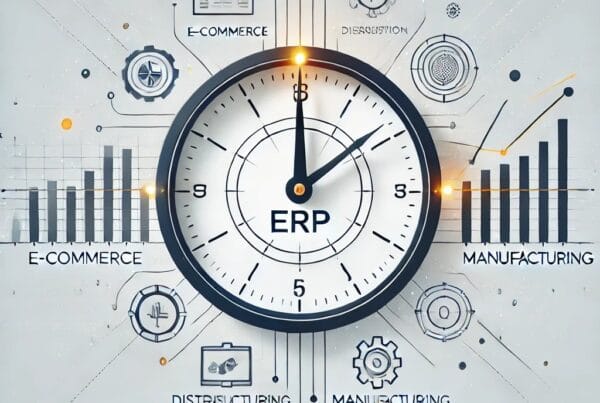
- 19 February 2025
- No Comments
The Need for Digital Transformation in Supply Chain Management
Managing a supply chain with spreadsheets might feel comfortable and familiar, but it’s far from efficient. In today’s fast-paced business world, companies need real-time insights, automation, and scalability to stay competitive. Transitioning to smart systems can streamline operations, reduce costs, and improve decision-making.
If your business still relies heavily on manual data entry, disconnected processes, and static reports, now is the time to modernize. Let’s explore how smart supply chain solutions can transform your operations and drive long-term success.
Challenges of Spreadsheet-Based Supply Chain Management
Spreadsheets have long been the go-to tool for managing inventory, logistics, and procurement. However, as your business grows, they can quickly become a bottleneck. Here are some common pain points:
- Data Inaccuracy – Manually updating spreadsheets increases the risk of errors, leading to costly mistakes in inventory and forecasting.
- Lack of Real-Time Visibility – Spreadsheets don’t provide instant updates, making it difficult to react to supply chain disruptions.
- Limited Collaboration – Teams working on different versions of a spreadsheet can create inconsistencies and inefficiencies.
- Time-Consuming Processes – Manually tracking orders, suppliers, and shipments consumes valuable time that could be spent on strategic initiatives.
- Scalability Issues – As your supply chain grows, spreadsheets become harder to manage, leading to inefficiencies.
The Smart Supply Chain Advantage
Modern supply chain systems leverage automation, data analytics, and cloud technology to optimize operations. Here’s how transitioning to a smart system can benefit your business:
1. Real-Time Data and Analytics
Instead of relying on outdated reports, modern systems provide live dashboards that track key metrics, helping businesses make informed decisions quickly. Predictive analytics can also identify potential disruptions before they impact operations.
2. Automation for Efficiency
Repetitive tasks such as order processing, demand forecasting, and supplier management can be automated, reducing human error and increasing efficiency. AI-driven automation can even optimize stock levels and suggest the best suppliers based on performance data.
3. Seamless Collaboration
Cloud-based supply chain platforms allow teams to work on a single, updated system, ensuring consistency across departments and reducing miscommunication.
4. Improved Inventory Management
Smart systems provide better visibility into stock levels, helping businesses prevent overstocking or stockouts. Automated alerts ensure timely restocking and minimize disruptions.
5. Scalability and Flexibility
As your business grows, a smart supply chain system can scale with you, integrating with new suppliers, warehouses, and logistics partners.
Steps to Transition from Spreadsheets to Smart Systems
Upgrading your supply chain operations doesn’t have to be overwhelming. Here’s a step-by-step approach to a smooth transition:
Step 1: Identify Your Needs
Assess your current supply chain challenges and define your business goals. Do you need better forecasting? Faster order processing? Improved supplier communication?
Step 2: Research the Right Technology
Look for a supply chain management (SCM) platform that aligns with your needs. Consider features like AI-driven analytics, automation, and cloud accessibility.
Step 3: Train Your Team
Successful implementation depends on user adoption. Provide training and support to help employees transition smoothly from spreadsheets to a smart system.
Step 4: Integrate with Existing Tools
Ensure your new system integrates seamlessly with your accounting, CRM, and ERP software to create a connected business ecosystem.
Step 5: Monitor and Optimize
Regularly evaluate system performance and gather feedback from your team. Use insights from your smart system to continuously improve operations.
Future-Proof Your Supply Chain
Embracing smart supply chain technology isn’t just about replacing spreadsheets—it’s about unlocking new opportunities for efficiency, growth, and profitability. With real-time insights, automation, and enhanced collaboration, your business can stay ahead in an increasingly competitive market.
If you’re ready to modernize your supply chain, take the first step today. Your business—and your bottom line—will thank you.
